The recently concluded Berlin Conference on the continuing civil war in Libya illustrates the drawback of current approaches to stabilization. At the conference, U.K. Prime Minister Boris Johnson called for rival Libyan factions to “stop this jockeying for position” and work for the good of all Libyans. Ideally this would be the case, but it is profoundly unrealistic. Jockeying for position is the essence of politics and cannot be eliminated, it can only be channeled into a productive direction. Recent U.S. legislation and policy openings provide an opportunity to establish a more realistic and effective American approach to stabilization.
On December 20, 2019, President Trump signed the Global Fragility Act (GFA), which requires the U.S. to develop its first ever “global fragility strategy” for stabilizing priority countries and regions or preventing conflict therein. It authorizes $1.15 billion in foreign assistance for this purpose. The GFA comes on the heels of the U.S. Stabilization Assistance Review (SAR), which outlines a framework for maximizing the effectiveness of U.S. efforts to stabilize conflict-affected areas.
As the U.S. government develops the GFA global strategy, it will be applying the SAR framework to develop political strategies for selected countries. In practice, though, what does stabilization “success” look like as conceptualized by the SAR approach? How is “strategy” defined and what should it consist of? The U.S. government does not have guidance on these issues.
Here, we argue that the best political strategy to help stabilize fragile states is one of “strategic empowerment.” This means supporting local actors with the legitimacy required to govern as well as the interests and values that align with ours.
Defining strategy, politics, and stabilization
Developing a “political strategy” suggests a shift away from resource-intensive responses such as counterinsurgency and nation-building. But what does it really mean to have a political strategy?
We define strategy as a theory of success. A theory is an explanation of how and why proposed actions will cause desired outcomes. Therefore, a strategy must include a clear statement of goals (what you want to cause), the specific proposed actions to achieve those goals, and the causal logic that connects actions to outcomes. Politics is the competition for power. Some countries have highly institutionalized, stable, and peaceful systems of competition for power; other countries are characterized by chaotic, violent competition. The path to stabilization involves shifting the incentives toward nonviolent competition and, in the near term, empowering actors who can peaceably manage conflict.
Accordingly, a political strategy of stabilization is a theory of how to influence the competition for power — and shape conditions on the ground — in a way that results in effective conflict management consistent with American interests. Fragile states have competing power networks and visions for governance. In some cases, elites who have legitimacy and are therefore in the best position to stabilize a locality might have beliefs and values inconsistent with those of the United States. One need look no farther than militias throughout Libya; or non-state armed groups in Yemen. As a result, the U.S. will face difficult policy choices in choosing which actors to support. It must do so head on and with eyes wide open to the trade-offs.
Toward a political strategy for stabilization
Academics and policy experts have suggested several potential types of stabilization strategies. The first plausible strategy is impartial institutional reform, in which the United States would use its influence and resources to cause the major local actors to accept a political system that incentivizes peaceful competition. This strategy is impartial in that it does not seek to pick winners and losers, but instead provide support to establish a political structure that favors stable conflict management. How likely is this approach to work, and is it consistent with U.S. policy? Impartial intervention can be politically untenable and too resource-intensive. While it is important to strengthen institutions for long-term success, any such an intervention, alone, ignores the core political aspect of conflict, which a successful strategy must address.
A second strategy is strategic empowerment. Applied to stabilization, the U.S. would pick sides, supporting the local actor most aligned with U.S. interests and values, and that is likely to be able to govern effectively and manage violence. The U.S. would use diplomacy, assistance, and defense support to enable a favored local actor to provide governance and requisite services and suppress future challenges to stability.
How likely is this approach to work, and is it consistent with U.S. policy? The strategic empowerment strategy is much less resource-intensive than impartial institutional reform, but has potential drawbacks. The most obvious is that it is difficult to pick winners, usually because the strongest actor is not always the one most aligned with U.S. interests. Vietnam presents a clear example, and pockets of Afghanistan possibly represent a similar case. A brief look at strategically important conflict zones suggests this could be a common situation, but one that the U.S. could plausibly overcome by conducting rigorous actor analysis and deploying diplomats to identify and engage key actors. A second issue is that strategic empowerment may look like imperialism. Regardless of U.S. intentions, others may perceive its efforts as nefarious.
The third plausible strategy is realpolitik. Like the strategic empowerment strategy, the U.S. picks a winner, but in this strategy, the U.S. simply picks the strongest actor, without weighing any other criteria. Realpolitik has the advantage of simplicity, but would require the U.S. to make unsavory alliances, potentially even supporting Iranian-aligned groups or Salafist actors. This option has a potential for blowback, like the emergence of al-Qaida from the remnants of the Afghan mujahedeen.
Implementing strategic empowerment
All the alternatives discussed above are bad options. However, fragile and conflict-affected countries or regions leave the U.S. with only less than optimal choices. In those cases where national interest compels U.S. involvement in stabilization, strategic empowerment is likely to be the most effective political strategy. It allows the U.S. to shape the outcome in post-conflict situations, considers power realities on the ground, and is relatively less resource intensive. Further, it enables the U.S. to support good governance as a foundation for stability. The major downside to a strategic empowerment strategy is the need for in-depth, reliable knowledge about local actors, and thus requires a U.S. commitment to gain that critical knowledge.
Picking a reliable, locally legitimate, effective ally in post-conflict situations requires good judgement based on three main criteria.
First, any actor that receives support from the United States must have interests and values that are not contrary with U.S. interests and values. The U.S. should not assume there will be perfect allies available, but must disqualify groups with interests and values directly contrary to American interests or values. This criterion should be seen as a weeding-out process, not a criterion that selects the best candidate. The guiding questions are: If this group gains control of this territory, can we live with the outcome? Will success of this group threaten U.S. values or interests?
Second, local legitimacy is the foundational attribute for a plausible strategic empowerment ally. It does not mean the U.S. supports the most popular group; it means any group the U.S. supports must be seen as a plausible governing authority of the area. The incumbent group must be from or have significant ties to that locale. The guiding questions are: Would the people accept this group? Can this group mobilize support among the populace? Linked to factor one above, the United States needs to develop a context-specific understanding of what does — and does not — constitute legitimacy, and the spectrum acceptable to U.S. interests. If a local population views a former militia group as the most legitimate set of actors to govern — at least in the short term — should the U.S. acquiesce and support?
Third, effectiveness or potential effectiveness is a necessary corollary to legitimacy. Even a group that starts with considerable public support will quickly lose that support if they cannot provide security and governance. Security is the core concern in post-conflict situations, but not enough for stability. All the assistance in the world will not reinforce legitimacy if it lines the pockets of the leadership rather than helping provide security and other services. This is why the United States must prioritize targeted governance assistance to quickly bolster actors’ ability to deliver and thereby maintain and enhance their perceived legitimacy. The guiding questions are: Does this group have a track record of (relative) integrity? Does the group have mechanisms for oversight or accountability?
Conclusion
The political trajectory of conflict-affected countries is inherently uncertain. In those few cases where national interests compel the United States to become directly involved in stabilization missions, the best approach to follow is a strategy of strategic empowerment, focused on supporting locally-legitimate actors whose interest and values align with ours. These actors provide the best bet for laying the groundwork for long-term effective governance.
The Brookings Institution is committed to quality, independence, and impact.
We are supported by a diverse array of funders. In line with our values and policies, each Brookings publication represents the sole views of its author(s).
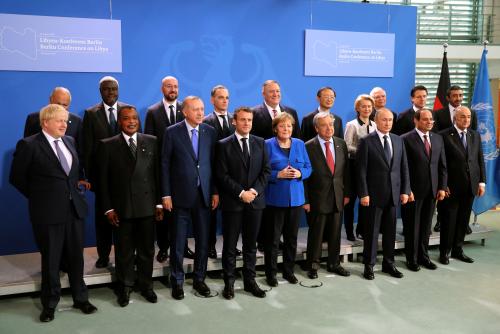
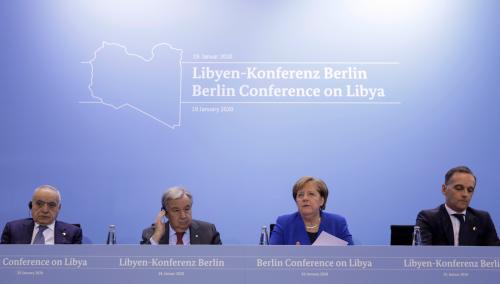
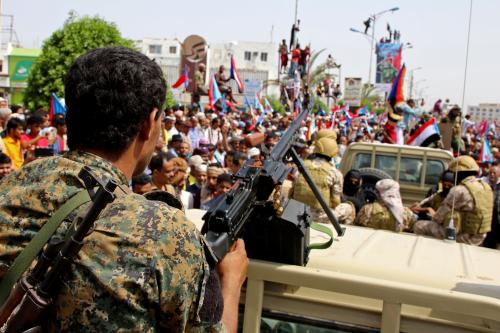
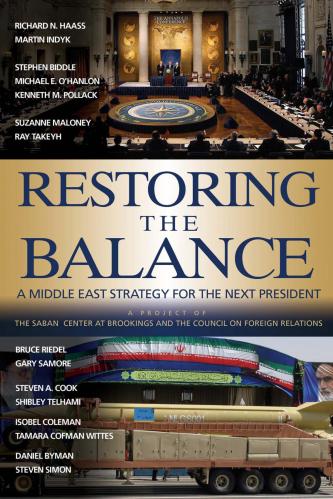
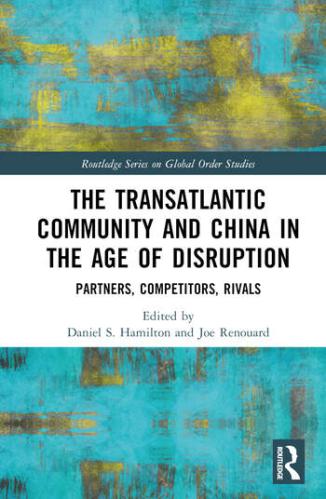

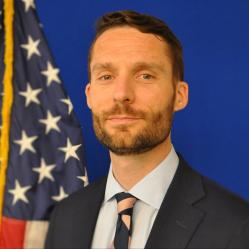



Commentary
Creating a political strategy for stabilizing fragile states
January 28, 2020